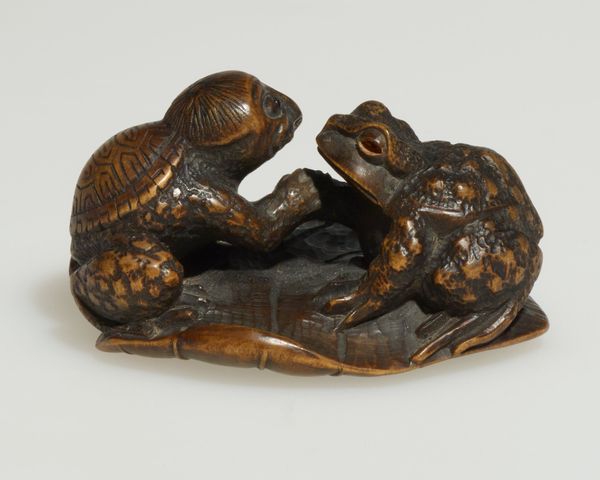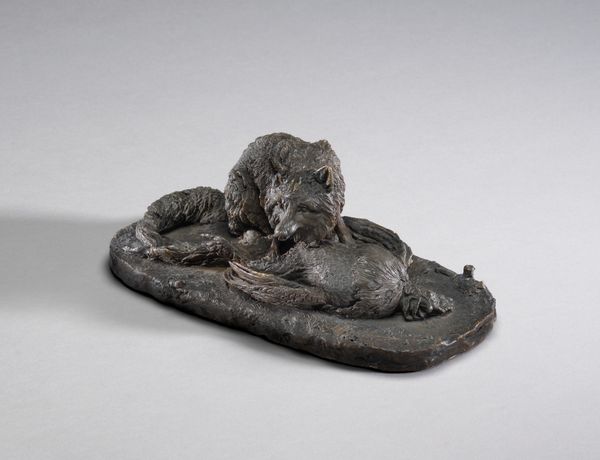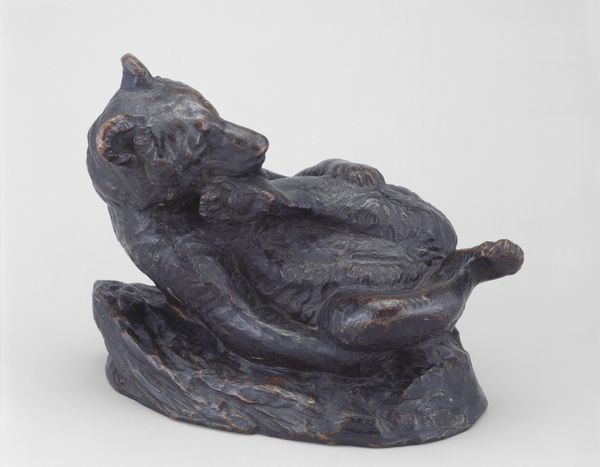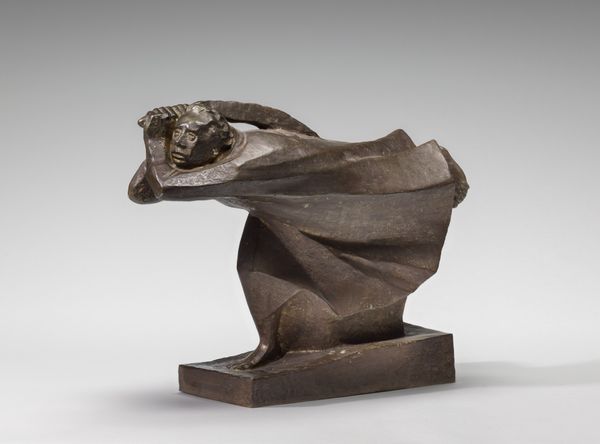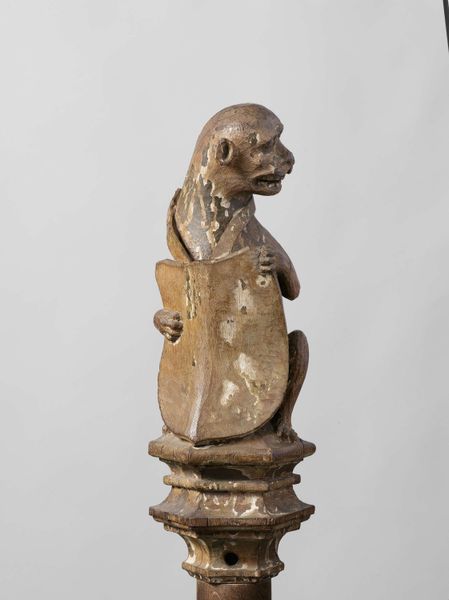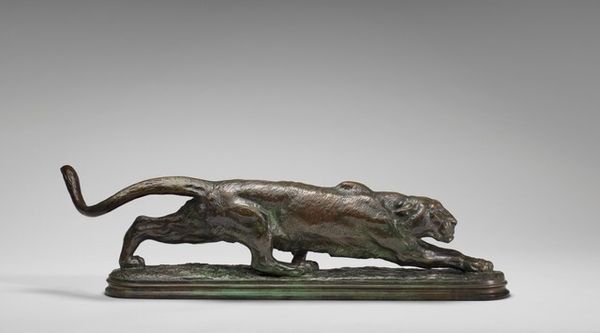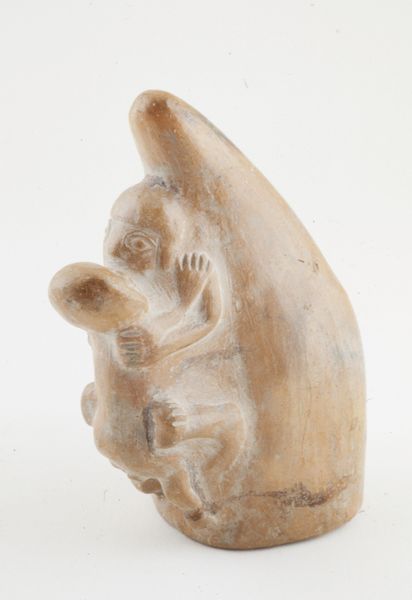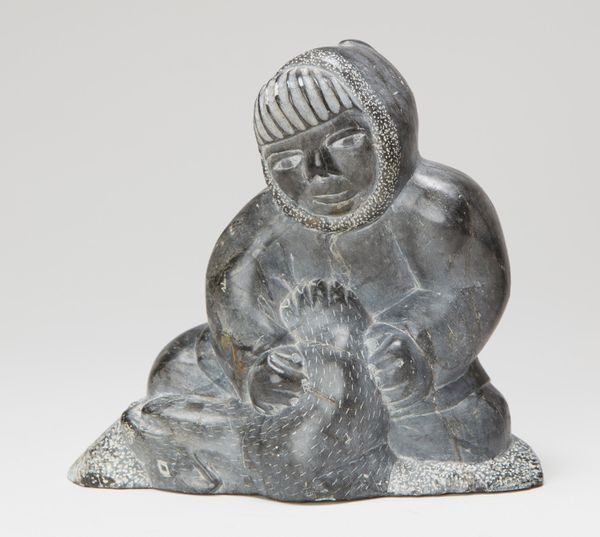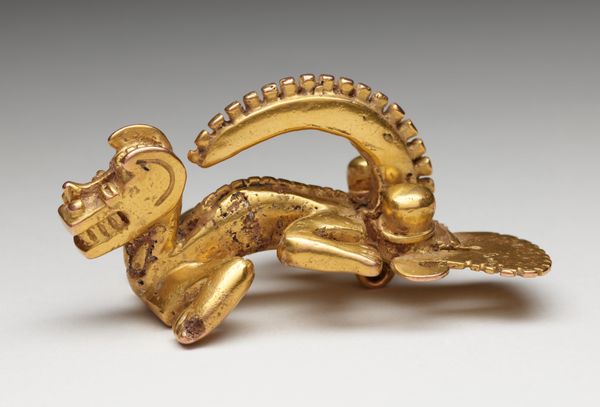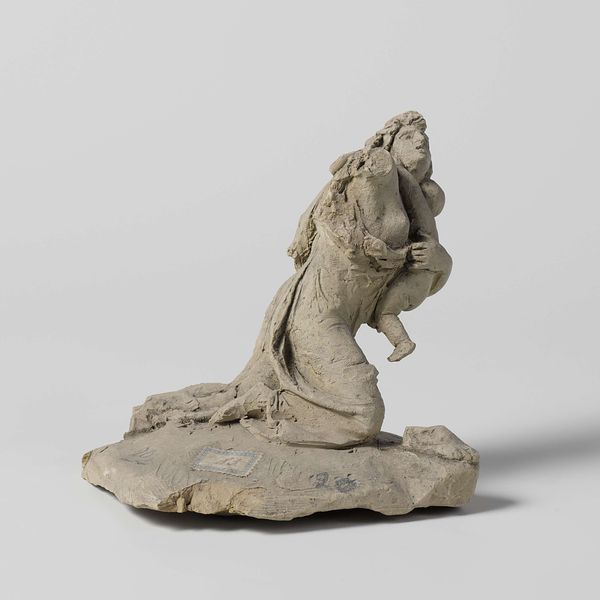
Plastiek in de vorm van twee elkaar vlooiende apen c. 1900
0:00
0:00
joseph18631939mendesdacosta
Rijksmuseum
bronze, sculpture
#
portrait
#
animal
#
sculpture
#
bronze
#
figuration
#
sculpture
Dimensions: height 5.2 cm, width 8.4 cm, depth 2.7 cm
Copyright: Rijks Museum: Open Domain
Editor: Right, so this small bronze sculpture, "Plastiek in de vorm van twee elkaar vlooiende apen," or "Sculpture of two monkeys grooming each other," by Joseph Mendes da Costa, from around 1900, is really fascinating. It strikes me as quite intimate, and almost melancholic in its observation of these animals. What strikes you when you look at this piece? Curator: It's interesting you use the word intimate. Looking at this sculpture from a historical perspective, it makes me consider how representations of animals in art often reflected broader societal attitudes towards nature and even humanity itself. Given that this piece dates to around 1900, the turn of the century, it's important to examine the influence of Darwinism and how society grappled with our relationship to the natural world. Doesn’t it almost appear like an anthropological study? Editor: An anthropological study! I hadn't considered that, but now that you mention it, these aren't simply *monkeys*; they become stand-ins, maybe symbols, for human interaction, even the social dynamics of the time. But in what sense, specifically? Curator: Well, think about the era. The late 19th century was a period of intense social stratification, colonialism, and evolving notions of race and class. Images of animals, particularly primates, could be used, sometimes unconsciously, to reflect and reinforce existing hierarchies or comment on human behavior through the guise of the 'natural' world. What message, then, are these particular monkeys, one grooming the other, sending? Editor: So, perhaps the grooming dynamic highlights societal power imbalances? Or maybe it touches upon ideas of dependency? It's interesting to consider the artist's role – was Mendes da Costa consciously embedding these ideas, or was he simply capturing what he observed and reflecting the unconscious biases of the time? Curator: That’s the central question, isn’t it? Understanding how social structures and cultural beliefs permeated artistic production, consciously or unconsciously, allows us to appreciate how this artwork communicates to an audience far beyond its literal representation. It's far more than just monkeys grooming each other. Editor: This was really insightful! Thinking about how this seemingly simple sculpture participates in broader social and historical narratives gives it so much more depth. I’ll never look at animal sculptures the same way again.
Comments
No comments
Be the first to comment and join the conversation on the ultimate creative platform.
